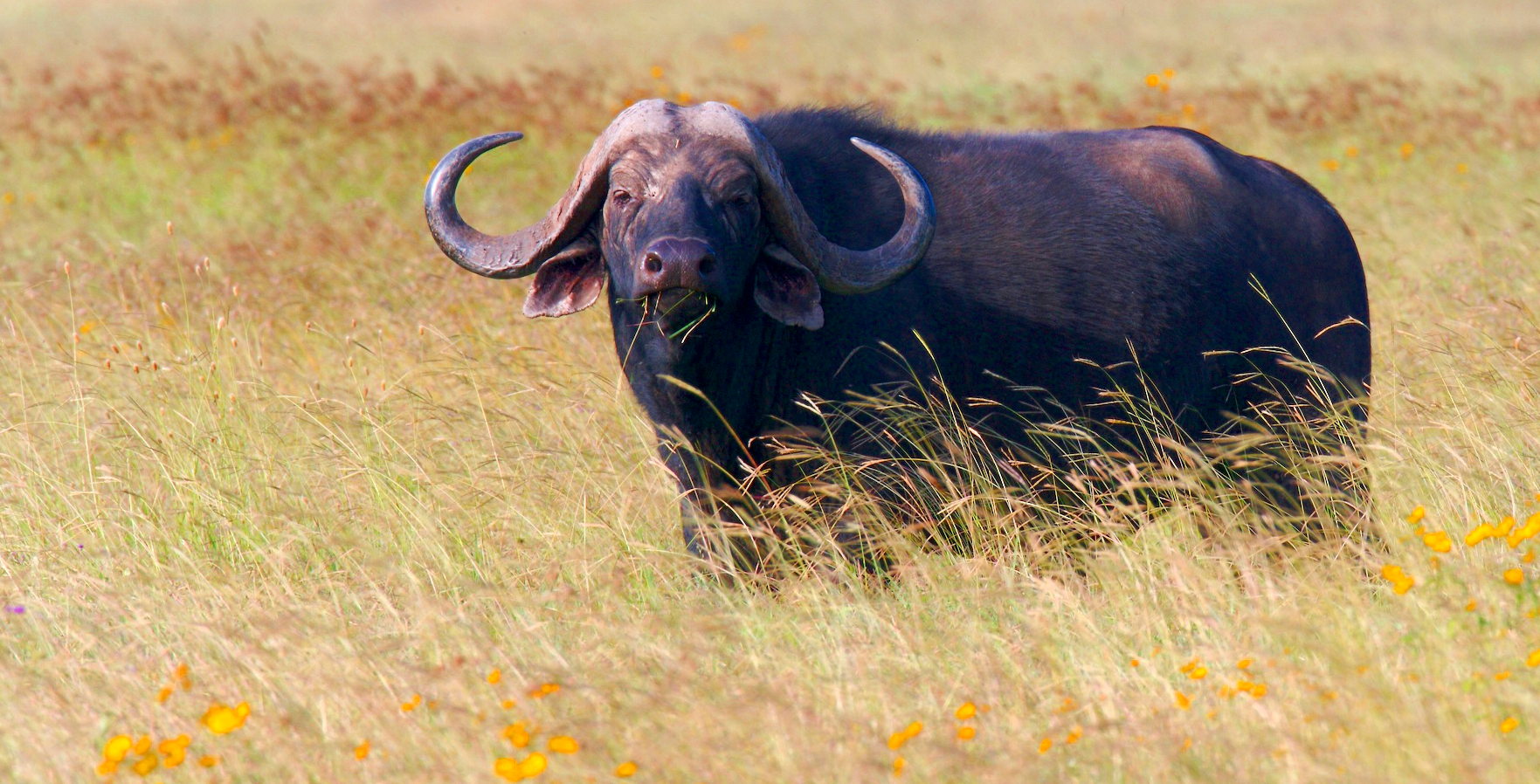Zandai
A wagon drawn by a zandai appeared in the distance, going towards the village. Taisa hid again in the middle of the vegetation and got a ride, without the wagoner's awareness. While she waited, hidden among the grain sacs, she retook her thoughts about the race, the benti and Gawa. —The Zandai are quadruped mammals that inhabit Engoru Savanna . They have been domesticated by savanna peoples as burden animals and to obtain products as milk, and meat.Benti-Zai
Basic Information
Anatomy
The zandai are quadruped animals similar to oxen. They, however, have a more muscular aspect, since their harsh habitat rarely permits them to be as fat as the common oxen from the Central Kingdoms.
Like an ox, the zendai has a pair of horns on it's head used to fight, that varies in shape and size according to it's gender: males have larger, hook-shaped horns, while female horns are smaller and just curled upwards. For that reason, although the male zandai are much stronger, the female has a much more dangerous blow, since their horns have the perfect angle for piercing the opponent's flesh.
In general, males tend to be larger that female, but store less fat in comparison.
Genetics and Reproduction
The zendai have a gestation period of 10 months. The mating season happens during the start of the rainy season, enabling the future calves to have a lot of food during their initial stages of development. After a calf is born, the female zendai won't mate again until her child get 2 years old (unless the calf dies).
Growth Rate & Stages
A calf leaves its mother between 2 and 3 years old and reaches reproductive maturity at the age of 4.
It's not certain how much these animals leave in the wild, but there are cases of zendai living for more than two decades. The domesticated ones can live up to 25 years (or rains, as the savanna people say), but are usually considered too old at the age of 20, usually being slaughtered before that.
Ecology and Habitats
Zendai live in the Engoru Savanna , what means they have an annual cycle of very distinct wet and dry seasons. During the year, the groups constantly roam the plains as the food becomes more scarce.
Dietary Needs and Habits
The zivar diet consists mostly of grass, but they also eat roots, grains and and a wide variety of herbs when available. The tibene usually buy zoku from the Zivar to complement the diet of their herds or guarantee their feeding in times of hardship.
Biological Cycle
The Seasonal rains of Engoru have a great impact on zendai life, affecting the mating seasons and migrations.
The tibene people, that have the major role on the zendai domestication, are known for conducting their herds in seasonal migrations to southern regions, where grass and water are more abundant. That implies in healthier calves and fatter animals in general, impacting significantly in the quality of products.
Additional Information
Domestication
Although very dangerous in the wild, the Tibene were able to domesticate it. The process was unknown, but the most accepted theory is the rapture of young calves, what allowed the zandai to be raised along humans and losing the natural aversion to them.
Domesticated zendai tend to be fatter and less muscular when in comparison to the wild ones; females produce much more milk and the death rate of calves is smaller.
Uses, Products & Exploitation
The Tibene raise the zandai for the most varied products: milk, which is used for the production of cheese; fur, used to make brushes; meat, which is consumed and sold; hides, present in clothing and tents; and horns and hooves, material to the manufacturing of varied utensils and decorations.
The zandai are also used as burden animals, and every village in Engoru has animals for transportation of people and products.
Geographic Origin and Distribution
Fairly spread across Engoru Savanna , specially in the central-southern regions.
Perception and Sensory Capabilities
Zendai have poor eyesight, but are known to have an excellent smelling sense. If one of them feels some threat nearby, it alerts the group with a distinct sound.
Lifespan
20 years
Conservation Status
The species faces no risk of extinction.
Average Height
1.7 m
Average Weight
For males, 700 kg; for females, 660 kg.
Average Length
2.5 m
Remove these ads. Join the Worldbuilders Guild










Comments
Author's Notes
So... basically I ended up domesticating cape buffaloes. This was however interesting for me to think about the economical relationship between the Zivar and the Tibene peoples.